A stop in Valparaíso (Valpo to locals) is a must-do when visiting Chile. Valparaiso is located 70 miles northwest of the capital Santiago and is the second largest metropolitan area in the country. Its name means “Valley of Paradise”. In 2003 the historic center of the city was declared a UNESCO World Heritage Site and is one of the most beautiful and picturesque towns in central Chile. Valparaiso has been the seat of the Chilean Parliament since 1990. In the 19th century it developed as one of the leading commercial ports on the Pacific coast of South America (like Buenos Aires on the Atlantic side). There are two distinct parts to the town: “el Plan,“, the narrow coastal plain where most of the shops and administrative services are located and the “cerros“, the hillside that dominates the city. Most of the inhabitants live in the “Cerros”, often in colorful houses with bright metal roofs. Valparaiso is often considered the cultural capital of the country because it was the birthplace of important artists and politicians, including Noble prize-winning poet Pablo Neruda, opera singer Giancarlo Monsalve, and utopian politicians like Salvador Allende. A bohemian, colorful and thriving city, it is full of positive energy and things to discover, and can seduce travelers… Will you succumb to its charm ?
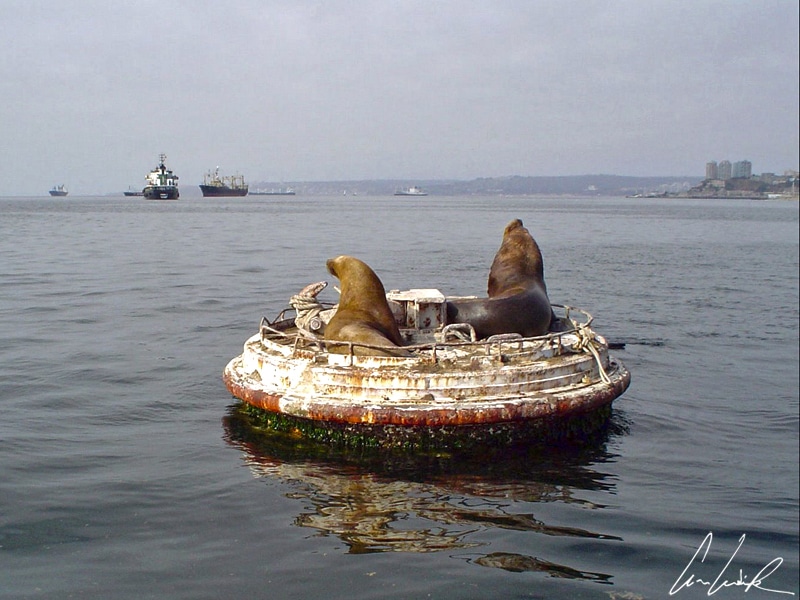
The Bay of Valparaiso , Sea Lions
Forty hills surround the Bay of Valparaiso and form a natural amphitheater overlooking the Pacific Ocean. The harbor district is the oldest quarter in the city having developed between the 16th and the 18th centuries. English and French ships made Valparaiso a compulsory port-of-call before or after passing through the Strait of Magellan. It is easy to imagine sailors coming off their four- or five-mast ships and heading for the bars around the Plaza Echaurren near the Matriz church: “Il a une casquette marine / Une vareuse de pêche / Il chante sa complainte bleue marine / La bouche sèche / Le bleu qu’il met dans sa vodka / Ça lui rappelle / Tous les j-aurai-du, y’avait-qu’à ” (He has a navy cap / A fishing jacket / He sings his sad Navy song/ His mouth is dry/ He puts his bleu in his vodka / It reminds him / All the times I should of, there was only…, lyrics of Le marin by the French singer Alain Souchon). The golden age of Valparaiso ended with the opening of the Panama Canal in 1914. The city is known among Chileans as “La Joya del Pacifico” (the Jewel of the Pacific) for its seascape. In the time of its greatest splendor, Valparaiso was known among sailors as the “Little San Francisco“. In the 20th century it lost its influence on the maritime world. Today, although the port is less active, military and container ships still arrive in large numbers. Traffic has increased as the opening of Chilean economy opens to the World trade and with the arrival of Post-Panamax ships that are too big for the Panama Canal. At the marina, from the Muelle (quay) Prat you can take a boat trip out on the Pacific Ocean to see sea lions basking in the sun on a buoy and to enjoy the view of Valpo from the water, with its multicolored houses perched on the “Cerros” (hills). Ah, the Cerros, there are more than 40 in Valparaiso. The houses are built over the contours of the hills… resulting in a rather anarchic, improvised and impressive urban design. For the record, it appears that the “Porteños” (a common expression in South America referring to the inhabitants of certain port cities) used abandoned sheet metal from the port to cover and protect their houses made of adobe bricks (a kind of clay mixed with water and straw). However, with the wind and moisture sheet metal rusts… So people began to paint their houses with paint used on boats, very resistant but also very colorful. This original touch makes the city unusual and very pleasant: Valpo puts color in our lives !
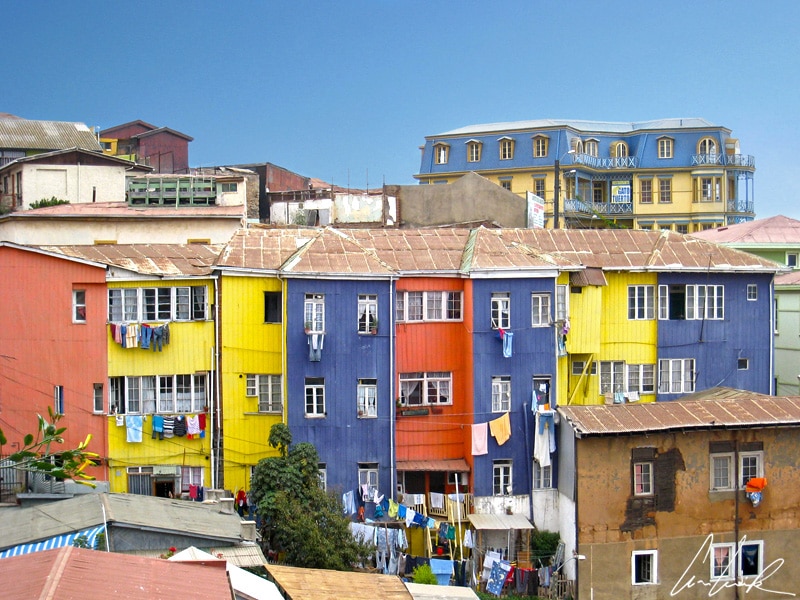
Valparaiso, colorful houses
Valparaiso’s old hillside neighborhoods feature a labyrinth of small, well-worn cobbled streets, mosaic stairs, and alleys that allow you to discover the city in ever-surprising ways… You’ll understand, the best way to visit the city of Valparaiso is on foot, with the strength of your calves. The streets are steep, even very steep, and go up and down from hill to hill… but there are shortcuts, small side roads that take you everywhere. It seems to be both Montmartre and San Francisco at once. Its topography and its messy, grungy, and a bit dilapidated aspect give the city its charm ! Unpolished and raw. We take the time to discover it and its hidden corners in this rustic landscape: we are pausing in front of a tiny bazaar, we get lost in an unsuspected passageway with convoluted stairs and stop in front of a small well-hidden café to order a coffee con leche… we relax watching native cats playing around ! As Pablo Neruda has written, “Someday, somewhere – anywhere, unfailingly, you’ll find yourself, and that, and only that, can be the happiest or bitterest hour of your life“. A paradise of urban art, Valparaiso is a veritable open-air museum. Here the word “Street Art” makes sense. Valpo is the Mecca for street art in Chile, an open canvas of color for creation and inspiration. It must be said that this chaotic artwork flourishes everywhere on the walls and goes perfectly with the architecture of the town ! Just wander freely along the cobblestone streets, a visual surprise emerges at every corner. No matter what path you take, you always come across real works of art. The murals are almost always beautiful. You will understand, if walls don’t display works of art, then the facades or stairs are colored… The city is a wonderland of art. It is on one of the stairs that we discover the words of this beautiful song Latinoamérica, a true tribute to all Latin America, “I’m Latin America / A people without legs yet I walk…”
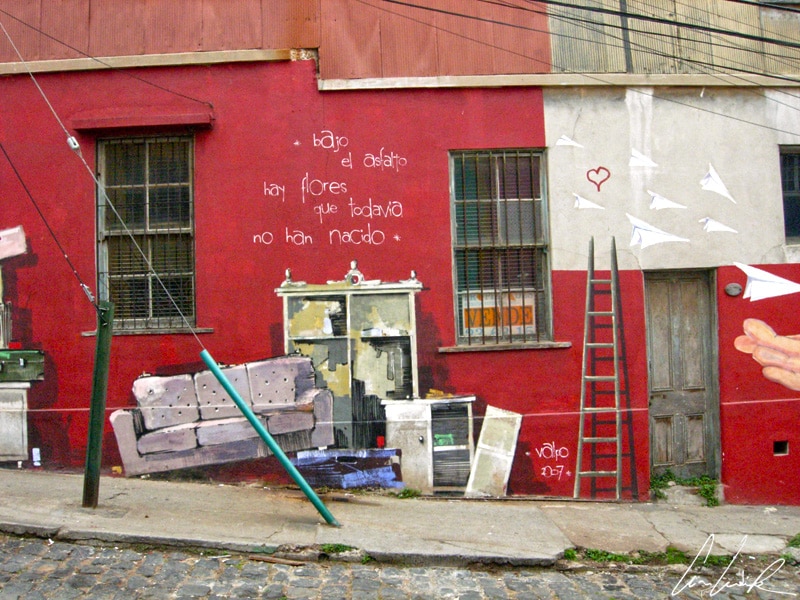
Valparaiso “Street Art”
When your main ally (meaning your muscular calf !) gets tired after the 40th staircase and the 10th hill, it is a relief to stumble on one of the many lifts/funiculars and to save some energy. Valparaiso is also known as “La Ciudad de Los Ascensores“. Nowadays they have become, together with the multicolored houses perched on the hills, one of the symbols of the city. They have been declared Historical Monuments by the Chilean government. At the turn of the 20th century, Valparaiso had had up to 30 funiculars. Unfortunately, most are now out of service. 12 were destroyed, 11 are inactive, and only seven are still operational. All are showing their age, requiring daily care, “like geriatric medicine”. Formerly hydraulic, then steam, now electric, they are kept by mechanics of German, French, and English origin. Due to the numerous Cerros above El Plan, they depart from the foot of the Cerros. Besides being a tourist attraction, they serve as a daily mean of transportation for the “Porteños.” They are as charming as they are sluggish and have survived thanks to the loving care of their machinists. Riding one of these machines is a journey in itself: it chirps, it squeaks, and it shakes. It’s rattling, but we love it ! The Ascensor Polanco connects Simpson Street in the Almendral district to Polanco Hill. This lift is the only true elevator in Valparaiso; all the others are technically cable cars or funiculars. It was built by the engineer Federico Page. Construction started in 1913 and finished in 1915. It was inaugurated in 1916 and declared a National Monument in 1976. It is probably the most picturesque incline of all. The first station at Simpson street is accessible via a 492-foot long tunnel, reminiscent of a mine, carved into the rock. The last station is 197 feet up the hill. From the top, we have a panoramic view of the city. A 158-foot long bridge connects the top station to Valderrama and nearby Streets. A little further away the Ascensor Espiritu Santo connects El Plan (Calle Aldunate) to the Cerro Bellavista (Rudolpho Street) and has the distinction of being the fastest of all funiculars of Valparaiso making the trip in 25 seconds. It was inaugurated in 1911; its vertical drop is 65 feet, and its rails are 213 feet long. It was declared a National Monument in 1998. Finally, the Ascensor Barón in the Cerro Lecheros is 246 feet long and rises 98 feet. It was built in 1906 and was the first funicular in the city powered by an electric motor, replacing the old system of water counterbalancing.

Mirador Yugoslavo on the Cerro Alegre
Let’s continue our visit to Valparaiso with the city’s most famous monuments, appearing on all postcards and tour guides, Cerro Concepción and Alegre. Inaugurated on December 1, 1883, Ascensor Concepción was the first funicular to be built in the city. It was declared National Monument in 1998 and connects Calle Prat next to Reloj Turri (Clock,) to the picturesque Paseo Gervasoni of Cerro Concepción. Its first cars were wooden and operated by water counterbalance placed on both ends of the line (elevation of 115 feet and a length of 230 feet – journey time 45 seconds.) At the entrance, the metal railings and turnstiles seem from another age. The cabin, accommodating seven people, is basic with just a small wooden bench. At the top we arrive in the Paseo Gervasoni with a magnificent view over the city and surrounded by large houses. Now that we have taken some altitude, the lyrics of the song En apesanteur by the French singer Calogero so true, “En apesanteur, tout est plus beau de là-haut / Je pourrais y passer des heures / À tournoyer, planer comme un oiseau” (In Weightlessness, everything is more beautiful from above / I could spend hours there / Spining, hovering like a bird). We continue past beautiful colorful houses with open views of the bay, stretching from the Brighton hotel (located on Cerro Concepción) to the Yugoslavo lookout (located on Cerro Alegre.) Finally, we could not leave Valparaiso without visiting “La Sebastiana“, one of the three homes of the poet Pablo Neruda, located on Cerro Florida and offering a breathtaking view of the port and the city. The poet called his house La Sebastiana in honor of its first owner and builder, the Spaniard Sebastian Collado. The house was declared a National Monument in 2012. Neruda wrote in his memoirs, “I have also built my house like a toy house, and I play in it from morning till night“. This five-story house allows you to learn about the life of the poet as well as his admiration for the port of Valparaiso and more generally for the sea: “Crazy Port” Valparaiso is source of inspiration, the “Old Woman of the Ocean” Or the “Queen of all the world’s coasts”. Like his other homes, he transformed it, adding stairs, nooks and crannies and decorating with a thousand odd objects from all over the world (paintings, sculptures, bottles, pieces of boats…), painting it in many colors like the houses of the port, to make it a unique place. One can admire the tiny bar where he prepared his specialty cocktail, “El Coqueleton”, composed of equal parts of cognac and champagne, and a few drops of Cointreau and orange juice. The aura of this house seduced me… for a moment; I could sit down and write at his desk, carried away by the inspiration that emanates from Valparaiso… “Ah, if only with a drop of poetry or of love we were able to placate the anger of the world“ (Residence on Earth). But it is time to leave this unique and bohemian atmosphere, the Mecca of Street Art and color, to continue our journey… as Pablo Neruda wrote, “he who does not travel dies slowly“.
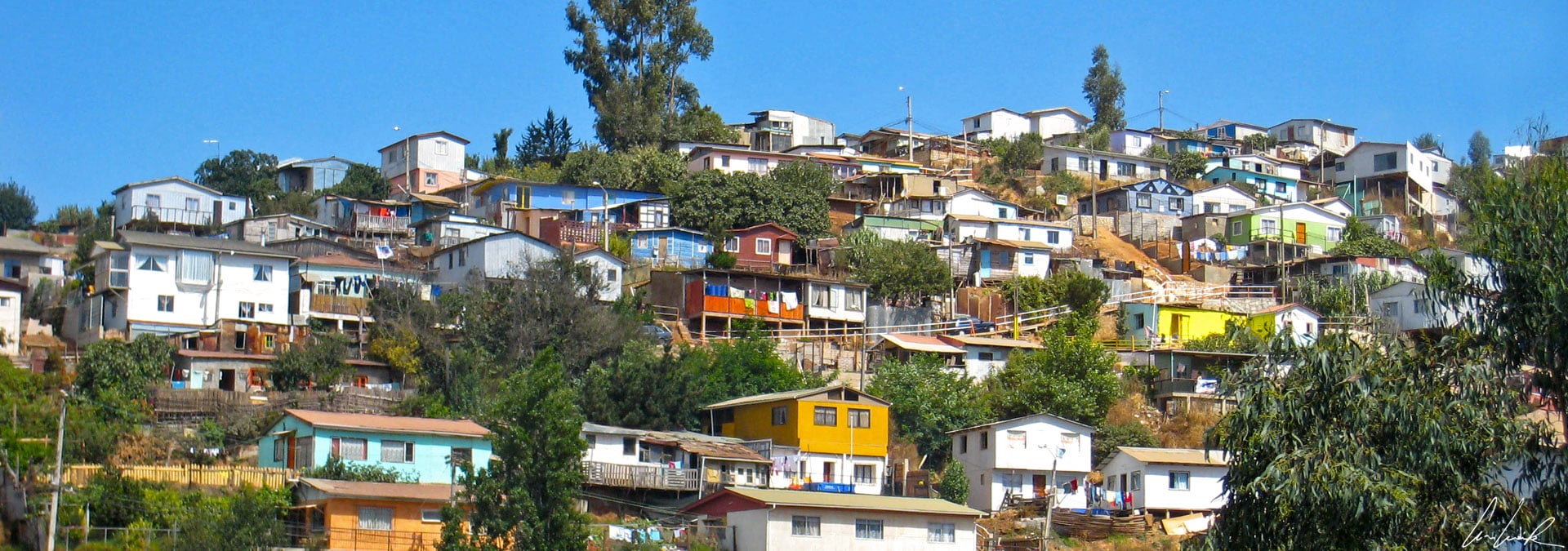
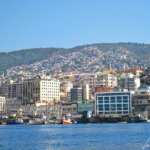

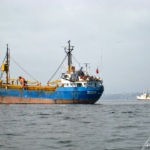



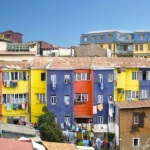
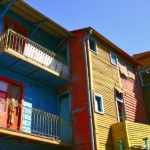

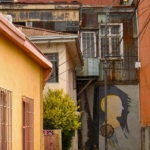

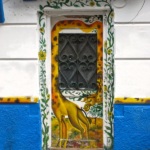
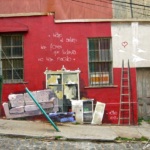
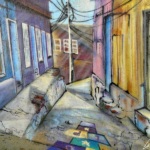


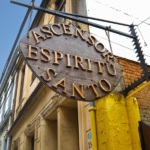
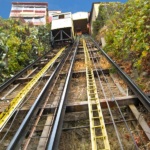



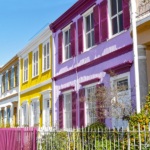
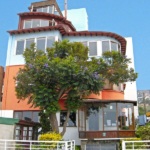
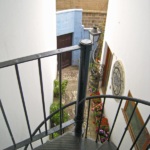


Ohh so colorful! This is what I am after in 2018 🙂
Brilliantly colored buildings, breathtaking lookouts, old funiculars and Street art. When we heard this description of Valparaiso, we knew we had to go 😉
I am a big fan of such wooden, colorful architecture (maybe that is why I live in Scandinavia). Would love to see this houses in Chile and photograph them.
We love wood houses too, they feel so natural, so back to earth ! Moreover Scandinavian homes have that pure, restrained, scaled down look based on warm minimalism, clean lines, impeccable craftsmanship :-). Valparaiso is definitely my favorite city in Chile.
Omg this is so colorful! I’m a huge fan of colorful places and my goal is to visit as many of them as possible. Definitely will not miss Valparaiso!
Valparaiso is worth visiting 😉 It is all about roaming the chaotic, hilly streets, and taking in the views and ambiance !
Valparaiso sounds really charming! The colourful houses looks pretty inviting. Interesting how the practice of painting the houses to protect it from wind and moisture has created a fascinating environment filled with bright colours. Guess I’ll be getting a lot of exercise when I get to visit because of its topography! 🙂
Valparaíso is more laid-back than Santiago. Its streets are still pleasingly ramshackle in parts and it has the vague seediness that often characterises large ports. Chilean artists, writers and musicians have long made the city their home, drawn to its picturesque location and bohemian mores 🙂
I’m in love with how vibrant and colorful Valparaíso is! I’m terribly bad at geography hence have never heard of this coastal city so thank you for introducing me to it. Will for sure be adding it to my bucket list for when I visit Chile!
Indeed, Valparaiso is a city that’s full of colour and culture, and after wandering around here for a few hours you can’t help but fall in love with the place 🙂
Great piece! It especially sparked my interest because I’m a fan of anything that has to do with old sea travels and the way they shaped the ports in the past centuries.
There are many old building in the Historic Quarter of the Seaport City of Valparaiso, many of which have links to colonial times. We were shown buildings with a British history, including the “Old English Bar” and an old British Bank 😉
Amazing photos, so colorful, Chile is on my bucket list. Thanks for sharing.
Thank you ! The city is full of culture, vibrant art, and a rainbow of colorful buildings. Valparaiso is worth visiting 🙂
All those COLORS! It’s a rainbow explosion. I love how it doesn’t look incredibly touristy either. I am definitely not in shape for those hills!
Yes, the first thing anyone who visits Valparaiso will notice is that it is a colorful city. Every building is painted in a unique and vibrant color 🙂 And you can take on one of the many lifts/funiculars to save some energy !
Them sea lions are too cute! And I like the pretty coloured buildings too, sounds like you had a great time In Valpo.
We’ve really enjoyed our visit to Valpo: brilliantly colored buildings, breathtaking lookouts, old funiculars and some of South America’s finest street art ! A stop in Valparaíso is definitively a must-do when visiting Chile 🙂
This looks amazing! Chile is definitely on my bucket list will have to check out Valpo. Is there a time of year you recommend going?? Thanks!
Thank you 🙂 The best time of year to visit Chile is the first couple of weeks of November and March. Great weather and few tourists. January and February are tricky as the whole country goes on holidays.
Absolutely beautiful, I love all the colors of Valparaíso! Exploring these streets and street art must be a great adventure when visiting, hills and all. Hope to get the chance to do it in the future. Beautiful images <3
Thank you ! The city of Valparaiso is a popular stop for visitors hoping to get exposed to Chilean art and culture, as well as some fresh sea breeze after the stuffy, high mountain air of Santiago ! It’s perfect for short trips from Santiago, you can go for just a night or two, but it’s an easy day trip as well. There so many things to do and explore in Valparaíso and the surrounding areas.
This looks so colourful and exactly the type of town I’d love to visit. I absolutely love the layout of your website and your photography is excellent.
Thank you so much 🙂 Visiting Valparaíso is a must if you are in central Chile. An easy day trip or a weekend is enough. Photography gives me an appreciation for the world that we live in. Always a different light, always different conditions… whether it’s a new or an old place. That’s what I love about photography.
How colourful and beautiful! And thank you so much for including the history, I always really enjoy learning the background of a place before visiting, and find it really interesting. Thank you!
So do I 🙂 Valparaíso gives you the delights of an old colonial European type city ! We’ve really enjoyed the city’s labyrinth of cobbled alleys and colorful buildings.
This place is so beautiful and colourful! I love the detailed post with the lot of information! Also, I was surprised that you referenced Calogero. His song was a huge hit and goes well with this post. Now I was to listen to it.
I love this french singer 😉 Your right, the song “En Apesanteur” was a huge hit on 2002. Certain songs take you immediately to a specific place. They precisely capture somewhere you’ve been or inspire you to plan a trip to the locale forever locked in lyrics…
Your photos are incredible! The colours of those buildings are out of this world! Valparaiso sounds like a place that I definitely need to add to my bucket list
Thank you 🙂 Valparaiso is pretty run down and grungy. However, I’ve really loved Valparaiso and I think it is worth a day or two to wander around the hills, ride the elevators(funiculars), see Pablo Neruda’s house…
So beautiful & vibrant!
Indeed, the city of Valparaíso is alive with avant-garde culture and vibrant street art 🙂
Wow… I’ve never heard of this place. It’s beautiful. 🙂
It is 🙂 Valparaíso is Chile’s response to its own modern, clean and sober capital -it’s a heaped, colorful, beautiful mess by the sea that is well worth a trip if you’re visiting this amazing, South American country.
Hi Céline,
As usual great great great and astonishing pictures.
Wonderful. I clicked through Valparaiso in Chile – I have been there many years ago and remember it now again – seeing your pictures.
Thank you.
Sabine
Thank you Sabine. I’m happy to hear that my pictures and description bring your memories back 🙂 to Chile !